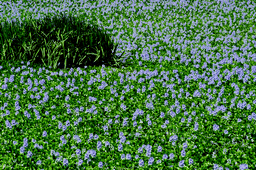A biomaterial based approach for arsenic removal from water
Abstract
We demonstrate that the non-living, dried roots of the water hyacinth plant [Eichhornia crassipes (Mart.) Solms] can rapidly remove arsenic from water. Atomic absorption spectrometry was used to demonstrate that more than 93% of arsenite (As(III)) and 95% of arsenate (As(V)) were removed from a solution containing 200 μg As l−1 within 60 minutes of exposure to a powder produced from dried roots. No difference in removal efficiency was observed between the two oxidation states of As studied. The amount of arsenic remaining in solution was found to be less than 10 μg l−1 which is the WHO guideline limit value for As in drinking water. The presence of arsenic in drinking water in a number of countries in the developing world has been found to be much higher than the WHO level, affecting the health of millions of people. In this paper, we show that a biomaterial produced from dried water hyacinth roots, a plant that is found in abundant supply in many parts of the world, can provide a simple, effective and yet cheap method for removing arsenic from contaminated water.


 Please wait while we load your content...
Please wait while we load your content...